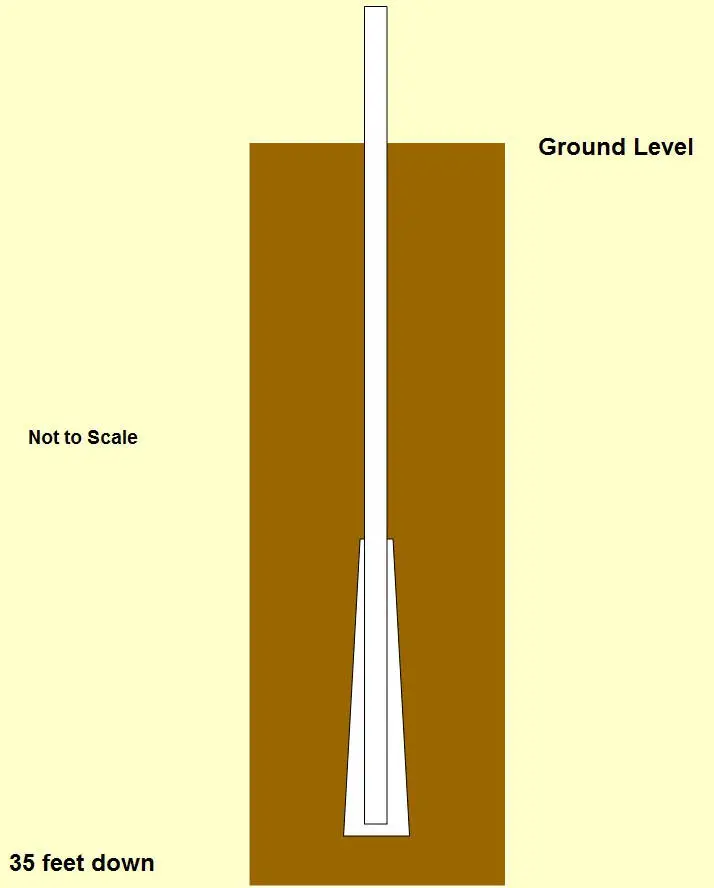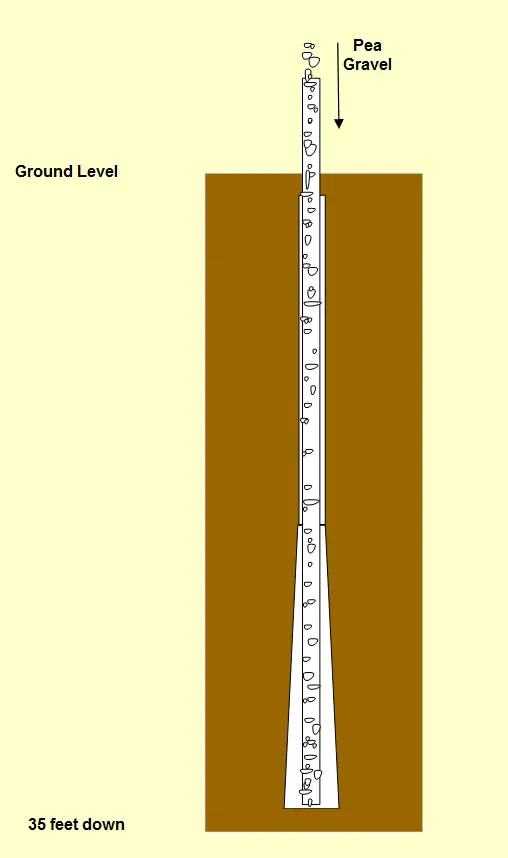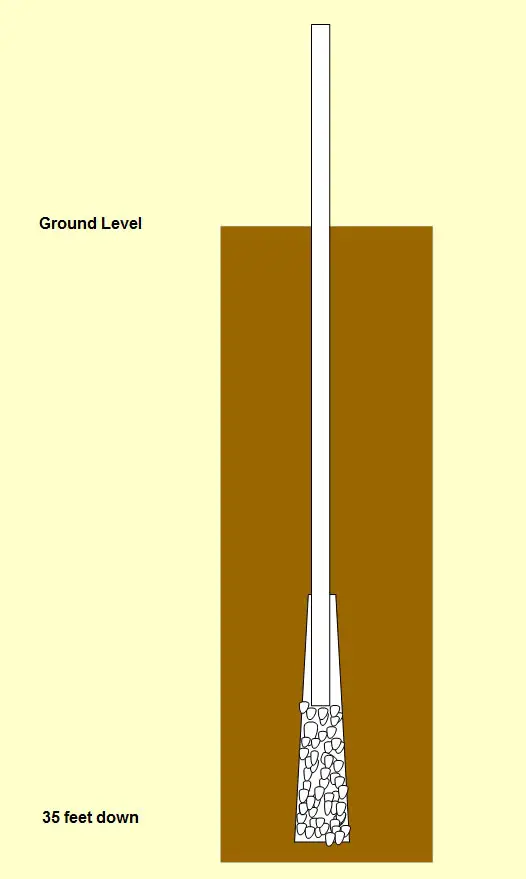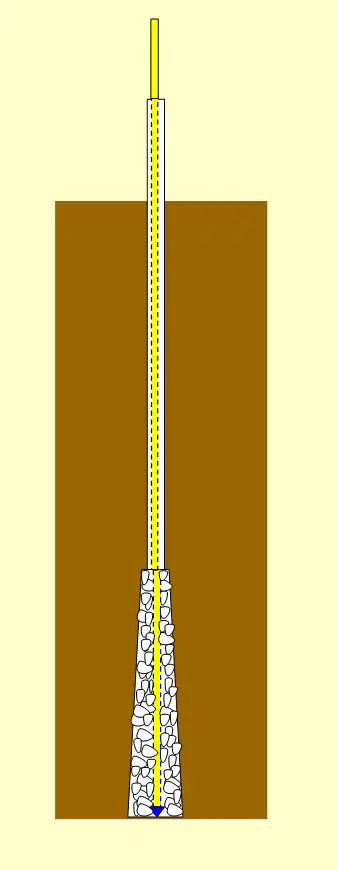PLEASE DO NOT USE A GRAVEL PACK ON YOUR FIRST WELL!
The quickest and easiest way to finish a well is to simply put a well screen at the bottom. Go to the bottom of this page for an example of how to install a well screen by itself. Most wells have no gravel pack. They just have a well screen at the bottom of the well. Please do not use a gravel pack on your first well! Please try a well screen by itself. 98% of all wells simply have a well screen at the bottom with no gravel pack and they work just fine.
I’m hearing from some folks who have tried gravel packs on their first well. They had problems, which is routine for new drillers and then they couldn’t fix their well because they had poured a bunch of gravel down it. Please don’t use a gravel pack until you have four or five wells under your belt.
Forgive me for being redundant, but I’m going to repeat this. Don’t try a gravel pack first! Just use a wellscreen. It is likely that it will work just fine!
PLEASE DO NOT USE A GRAVEL PACK ON YOUR FIRST WELL!
Having said that….If you are experienced, a bit more ambitious, and particularly if you are drilling a three inch well for a 1.25 inch well screen, you may wish to try a gravel pack. The gravel pack will hold the bottom of the hole open so more water can enter. Here are a couple of ways to install one.
FIRST METHOD: We’ll talk about the easiest and simplest one first. It involves only a gravel pack. No well screen. The gravel pack acts as a well screen in this example.
First, drill the hole to the depth you are going to, typically 25 to 35 feet. Then work the pipe up and down and side to side for quite a while so you have created a wide spot in the hole at the bottom of the well.

Next pour pea gravel down the three inch pipe.

Then, work the pipe up and down as you continue to pour gravel in slowly until the pipe comes up about three feet. The pipe will not go down through the gravel so you can tell how much gravel you have at the bottom of the hole by how much higher the pipe is than when you started. This is a very efficient way to drill a well and get a gravel pack at the bottom.

The video below shows the installation of a gravel pack similar to the one described just above.
INSTALLING GRAVEL PACK
What you see above will work because the gravel pack itself acts as a screen. Water is pumped out of the two inch pipe which rests just above the gravel pack.



I have exaggerated the size of the well screen point in the diagrams below. It is really the same diameter as the pipe as shown in the above photograph.
SECOND MORE ADVANCED METHOD: You can also install a gravel pack with a well screen if you are using a three inch drill pipe and a 1.25 inch well screen. Please note this won’t work with a two inch drill pipe. After you drill your hole and have the pipe really loose, pull the drillhead off and put a 1.25 inch well screen pipe down to the bottom of your hole. Then pour pea gravel down between the two pipes. Work the three inch pipe up and down as you continue to pour pea gravel. The three inch pipe will hit on the top of the pea gravel so you can tell how much gravel you have down in the bottom of the hole. When you have enough to cover the length of the screen and a little more, you are done.
Pull up the three inch pipe (be careful not to pull up the 1 1/4 inch pipe inside!) and you are done. In the diagram below, the well screen is shaded yellow, except for the point which is blue.

MOST COMMON AND RECOMMENDED METHOD
WELL SCREEN ONLY
I’ve saved the easiest and the most common for last. What most folks do is simply put a 1 1/4 inch well screen, three feet in length, down through the two inch drill pipe and then pull the the two inch pipe up and out of the ground. You can use it again. The important thing is to expose the well screen at the bottom of the well. The sand at the bottom of the hole will collapse around the well screen but this is not a problem. It will work just fine as long as it is in sand (not clay) and way below the static water level. The further it is below the static water level, the better.

 drillyourownwell.com
drillyourownwell.com